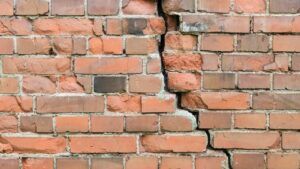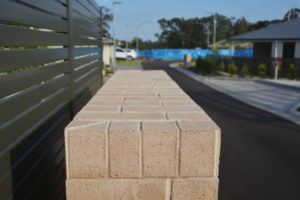Retaining walls are essential structures that provide support and stability to sloped landscapes. However, they are not immune to problems.
In this blog post, we will delve into the world of retaining wall issues, addressing common concerns, causes, and possible solutions. Whether you’re dealing with cracks, bulges, drainage problems, or other challenges, we’ve got you covered. Read on to discover how to tackle retaining wall issues and maintain the integrity and functionality of these important structures.
What Causes Retaining Wall Issues?
Retaining wall issues can arise due to various factors. Understanding the underlying causes is crucial for effective troubleshooting. Here are some common causes of retaining wall problems:
1. Improper Drainage
Inadequate drainage can lead to excess moisture buildup behind the wall, resulting in hydrostatic pressure that can cause cracks, bulges, or even wall failure.
2. Poor Construction
Insufficient reinforcement, improper installation techniques, and the use of low-quality materials can contribute to structural weaknesses and eventual issues with the retaining wall.
3. Soil & Foundation
The stability and performance of a retaining wall can be affected by various soil-related factors. Shifting soil, poor soil compaction, inadequate foundation preparation, as well as the type and characteristics of the soil, such as expansive soils, poorly compacted soil, or soil with insufficient load-bearing capacity, can lead to movement, bulging, or even collapse of the wall.
4. Design Flaws
Retaining walls must be designed to withstand the specific conditions and loads they will encounter. Inadequate design, including incorrect material selection, improper reinforcement, or inadequate wall height for the soil pressure, can contribute to issues.
Addressing Common Retaining Wall Issues
1. Dealing with Cracks and Bulges
Cracks and bulges are common problems that can compromise the integrity of a retaining wall. Here are steps you can take to address these issues:
For minor cracks: filling them with an appropriate sealant can help prevent further damage.
For larger cracks or bulges: Consulting a professional is recommended. They can assess the severity of the issue and determine the best course of action, which may involve reinforcement or even wall replacement.
2. Resolving Drainage Problems
Effective drainage is crucial for the longevity of a retaining wall. Consider the following solutions for addressing drainage issues:
Improve surface drainage: Ensure that water is effectively diverted away from the retaining wall by adjusting the grading or installing surface drains, gutters, or downspouts. This will help prevent excessive water buildup behind the wall.
Install a drainage system: If the retaining wall is still experiencing drainage problems, consider installing a subsurface drainage system. This can involve the use of perforated pipes, gravel, and geotextile fabric to facilitate proper water drainage away from the wall.
Use drainage aggregates: Incorporating drainage aggregates, such as gravel or crushed stone, behind the retaining wall can help promote water flow and prevent hydrostatic pressure buildup. These materials allow water to permeate through and reduce the risk of damage.
3. Strengthening the Wall
If the retaining wall exhibits signs of structural weakness or movement, reinforcing and strengthening measures may be necessary. Here are some possible solutions:
Adding reinforcements: Depending on the severity of the issue, reinforcements such as steel bars or geogrids can be installed within the wall structure to increase its stability and resistance to external pressures.
Installing buttresses or anchors: In cases where the retaining wall requires additional support, buttresses or anchors can be installed. Buttresses are structures placed against the wall on the backfill side, providing additional resistance against lateral forces. Anchors are embedded deep into the ground behind the wall, providing extra stability and preventing movement.
Consider wall reconstruction: In some cases where the retaining wall has experienced significant damage or is beyond repair, reconstruction may be necessary. It is crucial to consult with a professional to assess the situation and determine the most appropriate course of action.
Speak To An Expert
Retaining walls play a vital role in providing support and stability to sloped landscapes. However, they are susceptible to various issues that can compromise their integrity and functionality. Understanding the causes of retaining wall problems is crucial for effective troubleshooting and finding appropriate solutions.
Here at BRP Building Services, we understand the importance of retaining walls in providing support and stability to sloped landscapes. Our team specialises in designing and constructing various types of retaining walls using bricks. Whether you need to add value to your property or hold back a piece of land, we have the expertise to create the perfect retaining wall solution.
Contact us at BRP Building Services for professional bricklaying services and to discuss your retaining wall needs.





